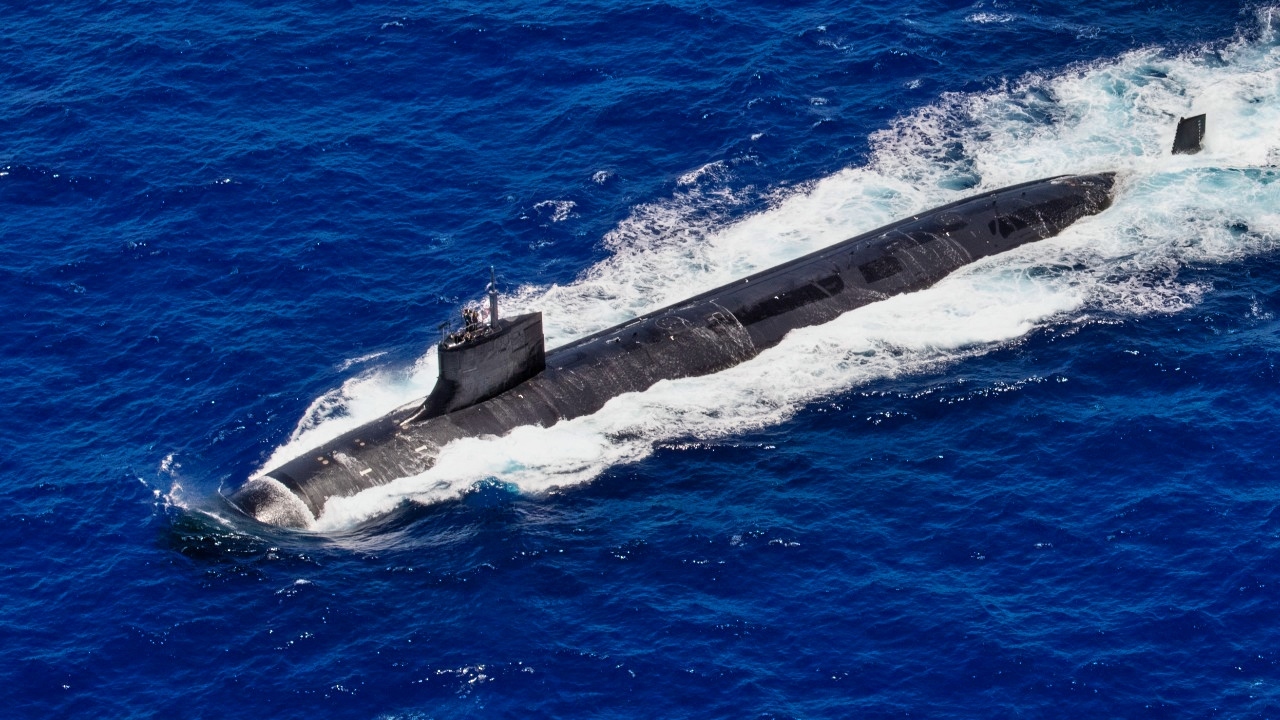Key Points and Summary on Seawolf-Class Challenges – The repair of the USS Connecticut, a top-tier Seawolf-class nuclear spy submarine (also called the F-22 Raptor of submarines due to having a small batch built, and yet, very powerful), has been delayed again, with the boat not expected to return to service until late 2026—a full five years after its 2021 collision with an undersea mountain.
-This setback is a symptom of a larger “nightmare” for the U.S. Navy: a crippled shipbuilding industrial base that cannot produce critical spare parts, like a new sonar dome, in a timely manner.
-The prolonged absence of this $10 billion asset puts the already tiny three-boat Seawolf fleet under immense strain as China’s naval power grows.
USS Connecticut to Resume Service, 5 Years After Crash
The USS Connecticut, which belongs to the U.S. Navy’s Seawolf-class nuclear attack submarines, will return to service by late 2026 after spending five years under repair following its South China Sea seamount collision.
The announcement confirms the extensive complexity and strategic value of fixing one of America’s most expensive and exclusive underwater assets.
Crash Blamed on ‘Poor Leadership’
The Connecticut suffered significant damage to its front section during the October 2021 incident.
The damaged vessel sailed to Guam before continuing to San Diego before finally reaching the Puget Sound Naval Shipyard in Washington State for repairs.
The Navy investigation revealed inadequate leadership, together with operational mistakes, which led to the removal of the vessel’s senior officers.
The Seawolf class only contains a trio of boats. It would likely have been expanded if not for post-Cold War budget reductions.
Each submarine is worth around $3.1 billion in 1980s dollars, the equivalent of over $10 billion in 2025.
These boats were designed to endure the deep-sea, without compromising speed and stealth- the perfect machines for covert surveillance.
The USS Jimmy Carter was hugely modified for spy feats.
The fleet, set to be overhauled from 2026, is just a pair of ships currently, meaning the Navy finds itself in dire straits.
Deadline Pushed Forward
Repairs to the Connecticut had been scheduled to finish up this Fall, but this deadline has now shifted to 2026.
Navy top brass have failed to give a public explanation for this massive change, and the media have published images of the vessel with significant chunks of its essential anechoic coating stripped off.
It also seems to be still missing a sonar dome.
Congress has already invested a minimum of $50 million in the repair effort, including a substantial $10 million for its new bow dome.
Issues with securing spare parts are also making this quest for repairs more cumbersome.
Struggle to Replace Parts
This dire lack of replacement parts—especially bow domes—is a major snag for the Navy.
In its 2025 budget, it demanded federal money to purchase a spare dome.
If approved, this will still take over three years to construct. Other delays to the Navy’s shipyard maintenance are highlighting the vulnerabilities of U.S. industrial capacity, especially in light of China’s growing naval ambitions.
Without viable replacements or disused sister ships to use for parts, the Navy has been forced to work on repairing the Connecticut, regardless of how lengthy and pricey this may be.
About the Author: Georgia Gilholy
Georgia Gilholy is a journalist based in the United Kingdom who has been published in Newsweek, The Times of Israel, and the Spectator. Gilholy writes about international politics, culture, and education.
Fighter Jet Fails
Russia’s Su-57 Felon Stealth Fighter Is a Waste of Rubles










